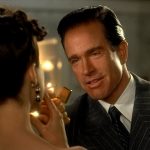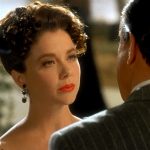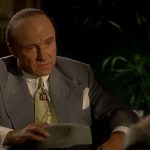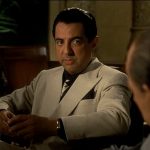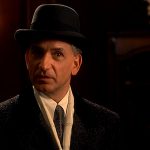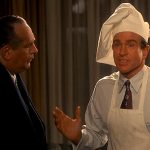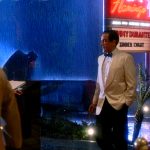
Bugsy – 1991
Bugsy is based on the true story of Benjamin Siegel, the Jewish American mobster known as, you guessed it, Bugsy. Warren Beatty played the infamous criminal, who was known for being a particularly violent hit man who, after moving from Brooklyn to Hollywood, became involved in the original construction of the Las Vegas Strip. I have to give Beatty’s performance some respect. In my humble opinion, he was better here than in other films in which I have seen him, like Reds or Bonny and Clyde, not that there was anything wrong with those performances.
The beginning of the film was a little confusing. It seemed to start in the middle of the story. The director, Barry Levinson, didn’t spend any time introducing characters or letting us know their relationships to each other. He just skipped past all that and let the audience figure out who people were as they went along. Of course, I knew who Beatty was playing, but I see him talking to Ben Kingsley. Even after the film was over, I still wasn’t clear on who Meyer Lansky was, and he was an integral character to the plot.
Then Joe Mantegna shows up, and I soon figured out that he was a Hollywood actor, but I’m still unclear as to why he was associated with the violent gangster, Bugsy. Elliott Gould makes an appearance as Harry Greenberg, but his screen time was so brief that I didn’t get a chance to figure out who he was or why he was there. It was as if the movie expected me to know the real story of Bugsy Siegel, and all the people involved, before I watched it.
Well, Bugsy moves to California and when he sees Virginia Hill, played by Annette Benning, on a movie set, he instantly falls in love. And it has already been established that whatever Bugsy wanted, he took. He was such a well-known and feared mobster that he could walk into a wealthy opera star’s home and force him to instantly sell it to him for cash, right on the spot. That seems pretty far-fetched, and I have to question it. Did that really happen? The answer is no, it didn’t, but it was a great scene for developing the character of Bugsy as an impulsive and intimidating loose cannon.
The film seemed to chronicle the rocky romance between Bugsy and Virginia. They seemed to have an up and down relationship that kept coming back to a storybook love, one in which lies, deceptions, thievery, and infidelity seemed to be forgiven with ease whenever either one of them displayed an act of kindness or affection. Her passion for him seemed to turn on and off like a light switch, implying that, in her own way, she was just as unstable as her lover. But I liked that they showed how the character of Virginia had just as much of a colored past as Bugsy. Her mouth was just as unapologetically foul and she did her share of sleeping around. Benning played the part very well.
I also have to give a big thumbs-up to Harvey Keitel’s portrayal of Mickey Cohen. We actually didn’t meet his character until we we’re well into the film, so he was introduced before we were expected to know who he was. Keitel just has the fact of a mobster. He had the perfect look for the part, and I have always regarded him as an excellent actor.
So, as I do with most films that are based on reality, I did a little reading, just to see how much the movie got right, and what they got wrong. Bugsy was, for the most part, true to history. They got the personalities of the characters right, and the general facts about Bugsy’s involvement in illegal organized gambling, murders, and erratic, violent behavior. But the biggest thing that the movie fictionalized was just how involved he was with the building of the Flamingo Hotel and Casino. The film would have us believe that it was all his idea, and that he was solely responsible for conceiving the Vegas Strip that we have today. In truth, the Flamingo was built by Billy Wilkerson, a man whom the film completely omits. Billy was a famous entrepreneur who had nearly completed building the Hotel and Casino before Bugsy Siegel got involved. Also, and this one is pretty minor, the film depicts Bugsy as being murdered on Christmas night, the night the Flamingo closed. But in reality, he was murdered 6 months later.
The movie was a good movie with some pretty good acting. I especially liked Keitel and Benning. But if I had any complaints, I would have to say that it was two things: the film’s length, which goes hand-in-hand with its pacing. It was too long and too slow. The problem is that I’m not sure what I would have changed. Beatty, who was instrumental in getting the movie made, and who is credited as being one of the producers, did a fine job of paying attention to historical details, and that is never a bad thing. But maybe certain scenes could have been shortened to speed things up a little. Maybe the whole sub-plot about Bugsy wanting to go to Italy to assassinate Mussolini could have been cut down or eliminated. But then we might not have gotten to see a great little performance by Bebe Neuwirth, as Countess di Frasso, the wife of one of Mussolini’s friends. Either way, the pacing and the length would really be my only complaints.
